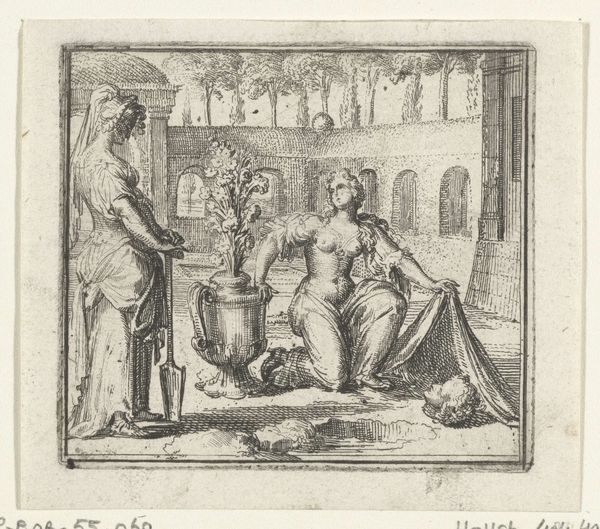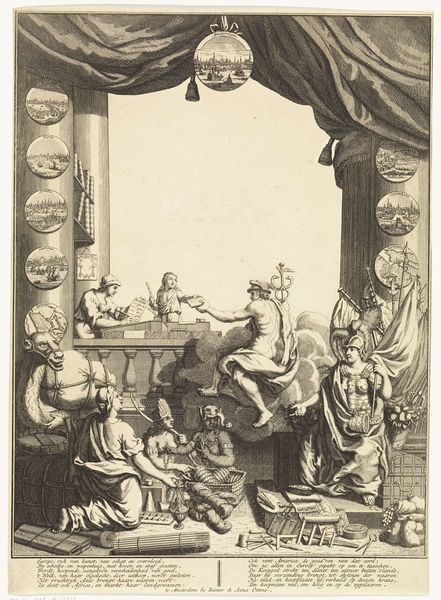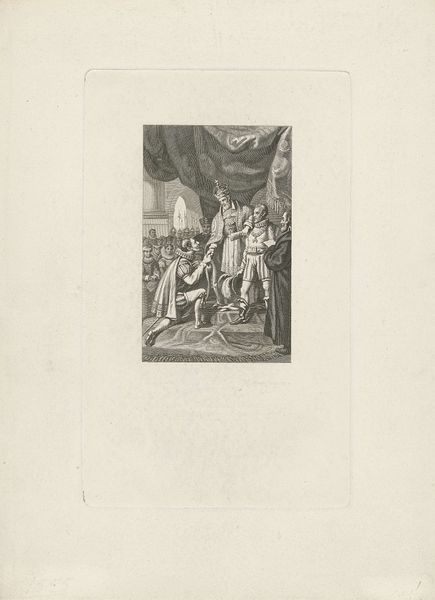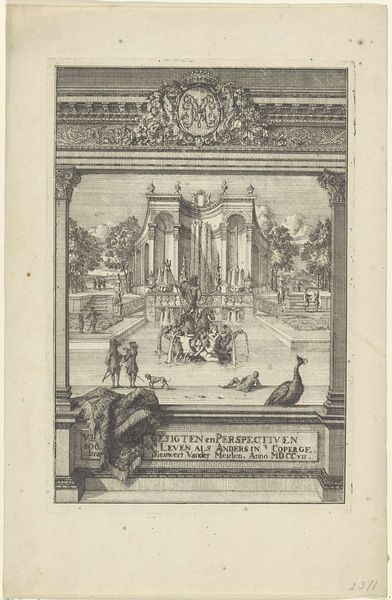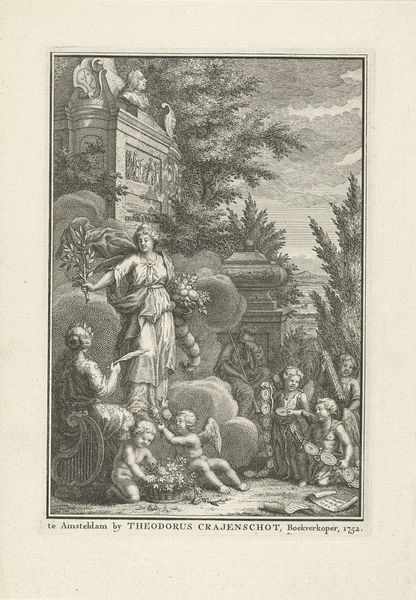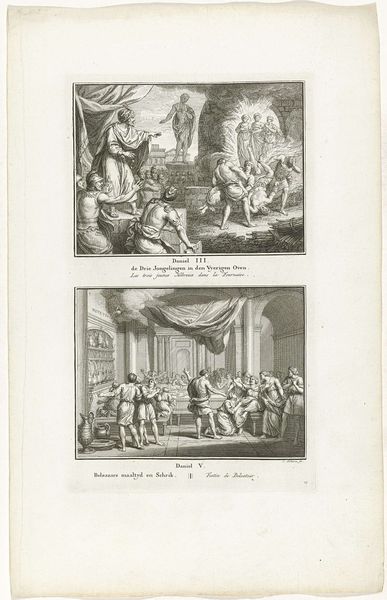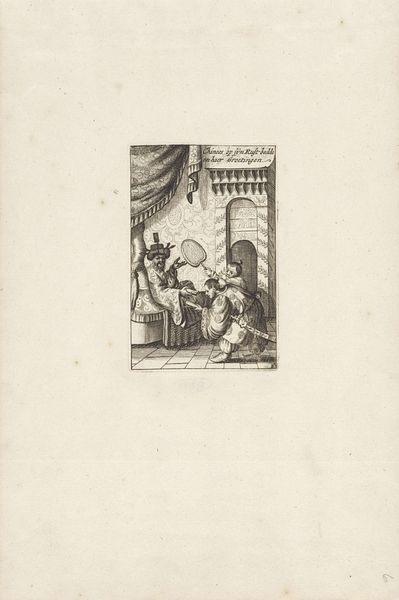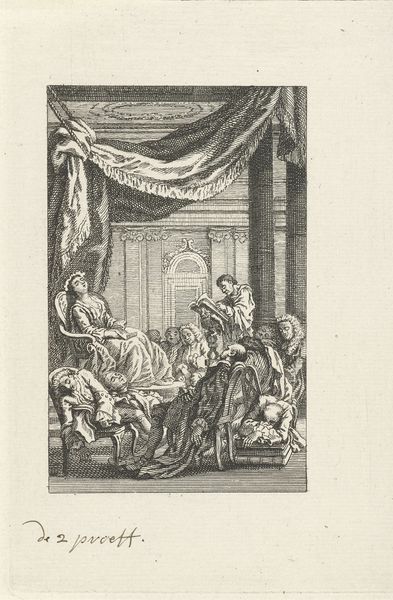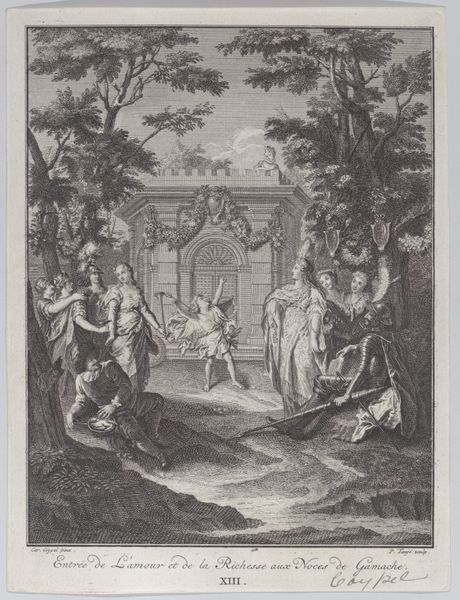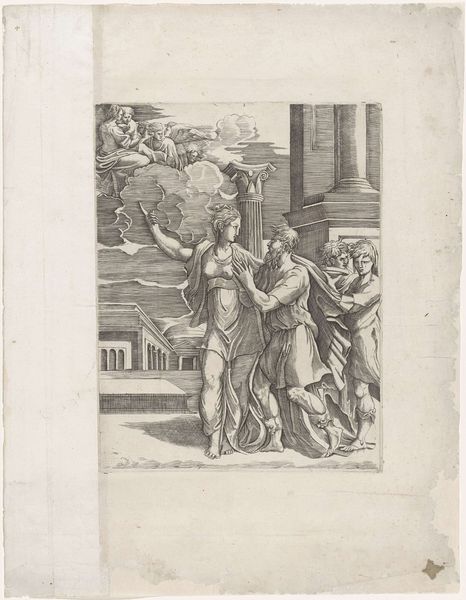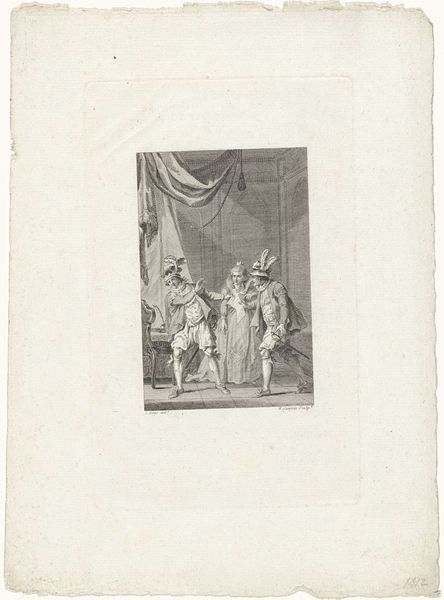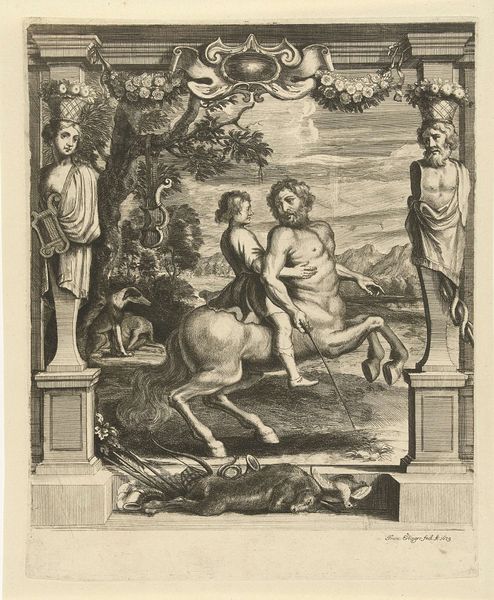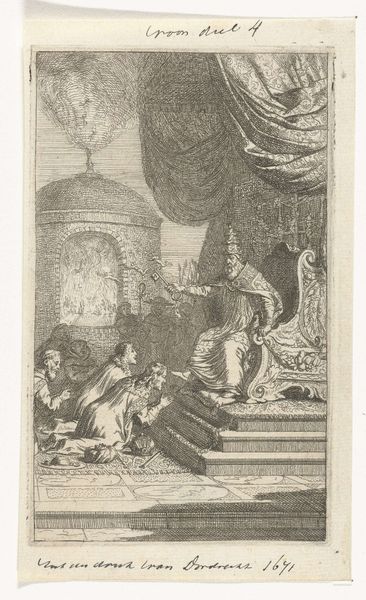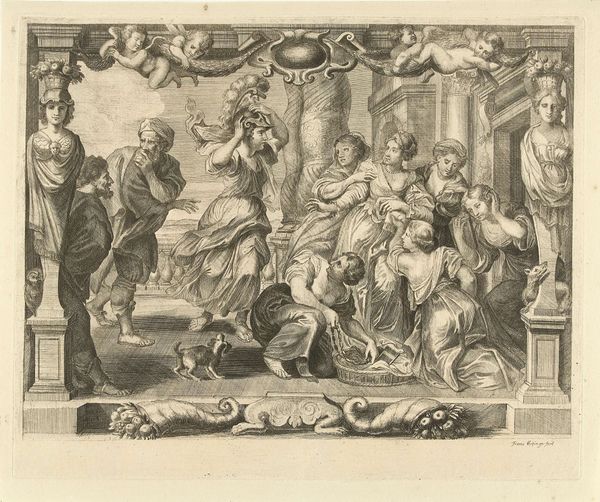
print, engraving
#
portrait
#
neoclacissism
#
allegory
# print
#
old engraving style
#
landscape
#
figuration
#
line
#
history-painting
#
engraving
Dimensions: height 306 mm, width 215 mm
Copyright: Rijks Museum: Open Domain
Jeremias Snoek made this print, Allegorie op de Alliantie met Frankrijk, in 1795, using the intaglio process. Lines were incised into a metal plate, likely copper, with a tool called a burin, and then filled with ink before being pressed onto paper. The precision of this printmaking technique allowed Snoek to capture fine details and subtle tonal gradations. Notice the textures of the fabrics, the intricate patterns on the allegorical figures' garments, and the delicate shading that creates depth and volume. These details speak to the artist's technical skill, but also to the cultural significance of printmaking. In the 18th century, prints were a primary means of disseminating information and imagery, acting as a form of mass media before the age of photography. The labor-intensive process also enabled the wide distribution of political and cultural ideas, making them accessible to a broad audience. Considering the artwork's material and making allows us to appreciate the complex interplay between artistic skill, technological innovation, and the social context in which the artwork was created. It reminds us that even seemingly simple prints can be powerful tools for shaping public opinion and reflecting the values of a particular time.
Comments
No comments
Be the first to comment and join the conversation on the ultimate creative platform.
